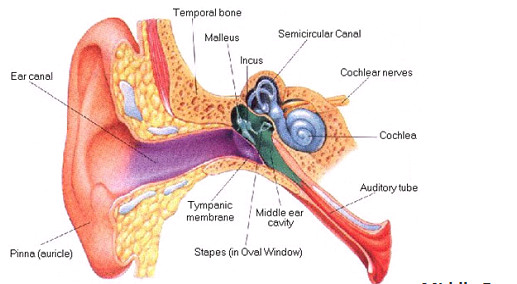HOW DO WE HEAR?

The human ear is a very interesting, amazing, intricate structure of the body. To understand how we hear, let us first understand, from ear doctor in Palawan, the anatomy of the ears.
The ear is divided into three parts: outer ear, middle ear and inner ear.
The 3 Parts of the Ear
Outer Ear
It is composed of the visible part of the ear or the PINNA and the EAR CANAL which connects to the ear drum or tympanic membrane. The outer 2/3 of the ear canal contains glands which produce earwax. The earwax is the self cleaning, water repellant mechanism.
Middle Ear
Behind your eardrum is your middle ear, an air-filled space containing the three smallest bones in the human body. These bones, called ossicles (also known as the hammer or the malleus, anvil or the incus and stirrup or the stapes).
This middle ear space is connected to the back of the nose by the eustachian tube. Its function is to equalize air pressure and bring a fresh oxygen supply to the lining of the middle ear.
Inner Ear
The inner ear can be thought of as two organs:
⦁ the semicircular canals which serve as the body’s balance organ
⦁ and the cochlea which serves as the body’s microphone, converting sound pressure impulses from the outer ear into electrical impulses which are passed on to the brain via the auditory nerve.

Inside the cochlea are thousands of tiny hair cells which change the mechanical signals from the middle ear into electrical signals which is transmitted to the brain through the auditory nerve. Each hair cell has a small patch of stereocilia sticking up out of the top it. Sound makes the stereocilia rock back and forth. If the sound is too loud, the stereocilia can be bent or broken. This will cause the hair cell to die and it can no longer send sound signals to the brain. This is a picture of healthy hair cells vs damaged hair cells. Birds and some frogs are known to regenerate these hair cells.
In people, once a hair cell dies, it will never grow back.
So, How Do We Hear?
⦁ SOUND WAVES pass through the ear canal and cause the eardrum to vibrate.
⦁ These VIBRATIONS pass through 3 connected bones (malleus, incus and stapes)in the middle ear. The footplate of the stapes connects to the oval window or the beginning of the inner ear.

⦁ This footplate applies a mechanical pressure on the oval window setting the inner ear fluid into motion. Since the surface ratio of the eardrum to oval window is 20:1, this allows an adequate energy transfer of pressure between the air and the fluids of the inner ear.
⦁ Moving fluid bends thousands of delicate hair-like cells which convert the vibrations or waves into NERVE IMPULSES.
⦁ Nerve impulses are CARRIED to the brain by the auditory nerve.
⦁ In the brain, these impulses are CONVERTED into what we “hear” as sound.
Say goodbye to ear, nose, and throat discomfort with our expert ENT care.
Book now to schedule your appointment with an experienced ENT doctor near you and start feeling better today.
Your health is our priority.
